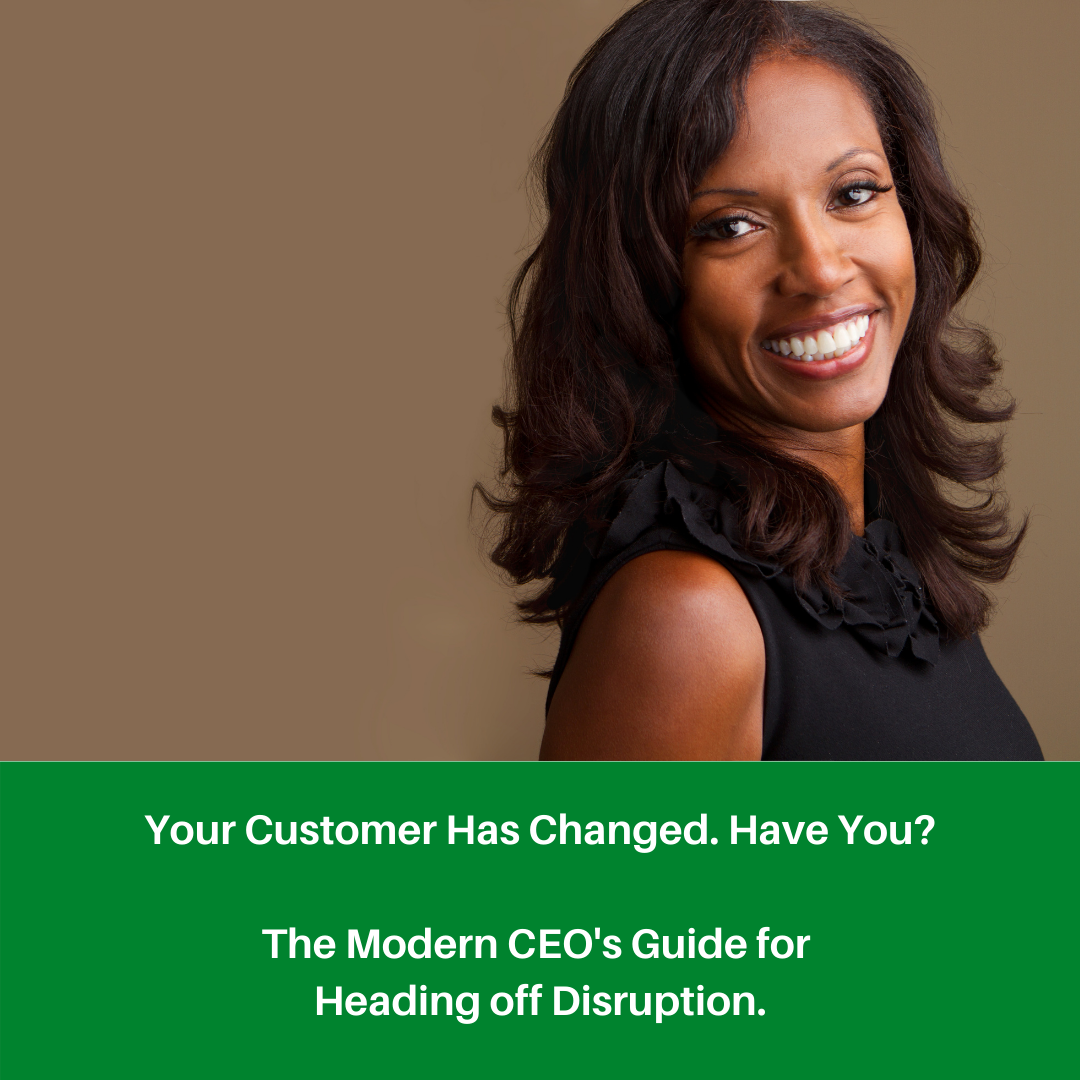Welcome to our series called “The Strategic Piece,” which look at the hidden issues and topics that can challenge a business, add value, or point to a leading indicator that’s a story about a new customer behavior, trend, or market shift that could impact the way we do business in the future.
In the first article in “The Strategic Piece” we’ll talk about why leading indicators are important to your bottom line, especially in times if your business is in flux, because it could be a window into the future of your business if you’re willing to grapple with it.
_________________________________
For many businesses, January is the beginning of the new fiscal year. The last sales are done and company books are closed for the previous year. Many companies will experience a year of new growth – Congratulations. Yet others will get an unfortunate surprise of flat or declining revenue for the first time. For some, this will be the second year of flat or declining revenue growth.
A Year or Two of Surprises
 For CEOs and senior leaders experiencing flat or declining revenue growth, it may mean no bonuses, no salary increases, or perhaps it could mean hiring freezes or layoffs. Perhaps you’re doubling down on sales training, cutting costs, or holding off hiring completely. You tell yourself you’ll execute better marketing campaigns and improve overall efficiency in the business. When it happens the first time, it’s a surprise, an anomaly – the hope is next year will be better.
For CEOs and senior leaders experiencing flat or declining revenue growth, it may mean no bonuses, no salary increases, or perhaps it could mean hiring freezes or layoffs. Perhaps you’re doubling down on sales training, cutting costs, or holding off hiring completely. You tell yourself you’ll execute better marketing campaigns and improve overall efficiency in the business. When it happens the first time, it’s a surprise, an anomaly – the hope is next year will be better.
If this is your second year of flat or declining revenue – something else is probably going on.
Sound familiar? You’re not alone because the reality is you’ve probably missed 3 additional years, not just 2 years. Let me explain why.
The 3 Missing Years
Your business has actually been in flux for 5 years – not the two years when you initially recognized the bottom-line impact. It’s something I’ve observed whether working with large and small companies. What’s gone unnoticed in this equation are the 3 critical years when hidden challenges which can relate to any business:
Customers changed. Demographically, Gen X (born 1965-1980), Millennial (born 1981-1996), and Gen Z (born 1997-Present) consumers at the forefront of the minds of advertisers and brands. This shift is changing how, when, and where people shop. With 1 million Millennials, they’re now the largest group of consumers in the country. Shopping takes place on their smartphone.

Retail to Apps. Photo Credit: Canva.
Online shopping by Millennials and Gen Z has led 9,300 more brick-and-mortar stores to go out of business in 2019. By 2026, that’s projected to be 75,000 stores. Gen Z takes shopping to another level that looks a little different with a focus on price, value, and brand authenticity. This generation is redefining how they view brands, including a focus on creating their own brand.
For Hallmark, a 113-year-old company greeting card company known for projecting All-American wholesomeness, was looking for a way to drive more people to its greeting card stores. That opportunity presented itself during the golden age of TV when they became one of the first companies in 1948 to sponsor TV programming that aligned with their All-American wholesomeness values and promoted their products.
Branded Hallmark Playhouse, rebranded as Hallmark Hall of Fame, the broadcast TV specials lasted until 2011 when the business model changed due to low ratings. In 2001, Hallmark Channel was established on cable TV and they rolled out their first Christmas move in 2011. “Countdown to Christmas” romantic programming was launched in 2011 and in 2014, Hallmark Movies & Mysteries launched “Miracles of Christmas” programming focused on topics such as loss, adoption, and self-esteem.

Greeting Cards and Romance Movies. Photo Credit: Canva.
If you’re like me, you’ve just come out of your two-month “Christmas” stupor watching Christmas movies which start right before Halloween and runs through year-end. This year, Hallmark Channel has led all of cable, with a total of 85 million-plus in total viewers. The holiday programming generated $400 million dollars in revenue and reimagines Hallmark as a media company.
Yet, with all of this success as a media company, Hallmark is experiencing some competition. Lifetime, with their “It’s a Wonderful Lifetime” Christmas programming, has identified a viewership gap – holiday shows that tell stories of People of Color and diverse couples who live in the city, suburbs, and rural regions of the country. This amplifies the demographic shift on the move, especially with Gen Z, which is known as the most diverse generation yet. With 30 shows, Lifetime is catching up with the 40 shows Hallmark programmed for 2019 across two channels.
The extent of the changing viewer demographic was front-and-center when Hallmark Channel canceled Zola’s advertising, featuring same-sex couples, because of concerns expressed by their primary target audience of conservative viewers. However, with the pushback from the LGBTQI audience during the peak of Hallmark’s sales season, Hallmark is suddenly realizing their Christmas holiday fair has a much broader reach and extends beyond their original target audience. They’re experiencing something companies often experience – markets change. The challenge for any business is whether you see the changing customer, do you understand they why behind that change, and are you ready to pursue this new market?
Markets changed. Frequently, when the market changes, we don’t see it- another hidden challenge. Our focus is on lagging Key Performance Indicators (KPIs) like Return on Investment (ROI) or Earnings Before Interest, Taxes, Depreciation, and Amortization (EBITDA). These indicators tell us what happened in the past.

Leading Indicators: Story. Photo Credit: Canva.
Current indicators tell us what’s happening now. When the CEO asks the CFO about cashflow from certain products for the day, you see what’s happening in real-time. The CFO can tell the CEO our cash flow for the day is $500,000 from these three products.
Yet, what we need to also focus on are leading indicators. These are not KPIs. These are disparate stories about the changes taking place in the market or environment that can dramatically shift elements of your business and change assumptions taken-for-granted – right under our noses.1 The challenge is making sense of the stories and begins to paint a picture of the implications for customers, the market, and for the company.
In 2016, the millennial demographic ranked as their number one type of charity to contribute to as children’s charities, at 29%, and the third-largest group for contributions was healthcare charities, at 20%. Fans of cooking shows like Rachael Ray, they preferred shopping for organic food. By themselves these stories are individual leading indicators. However, if you’re a fast-food company like McDonald’s, it might indicate challenges with the next generation of customers who support the next generation of disruptors such as Chipotle.
In 2020, things have changed for both Chipotle and McDonald’s. The impact of technology and the demand for delivery services including apps are changing the way we think of fast-casual dining. The focus on food quality and healthiness have become basic table stakes. Limited time and greater demand for delivery service convenience for customers are where the competitive focus has shifted. The question we have to ask ourselves is what are the stories about the market we need to listen to? They may point to new disruptors.
Disruptors entered the market. The relationships companies have with customers and how the players in the market who make up the ecosystem interact. Ecosystem players could be the middleman, the manufacturer, suppliers, and the end-user customer. How their needs are changing because of the other players could be an opportunity for growth.

Taxis and Ridesharing. Photo Credit: Canva.
By turning anyone who signed on to their app into a taxi driver, Lyft and Uber created an on-demand environment where you could call a taxi whenever you wanted, including areas of the city or country that weren’t serviced by a taxi. The disruptors democratized who could be a taxi driver and achieved scale quickly. At the same time, the rules and regulations for who could be a taxi service were pushed to the limit and in some cases outstripped.
Currently, the classification of contractors or employees is being challenged in different parts of the US. Countries such as the UK and India are demanding the rideshare companies adhere to their regulatory system or they can’t operate in the country. As disruptors, Lyft and Uber are causing countries, states, and cities to questions the extent to which disruptive businesses can operate with meeting established regulations. Who are the disruptors causing you to question your business model?
Embrace the Change
How often should a CEO and their team rethink their business and transform their company? Every 5 years.
In today’s environment, changing customers, markets, and disruptors are increasing the speed at which business moves. Continuously looking at the leading indicators as part of the executive team’s regular meetings will begin to help you make sense of the stories.
If you’re grappling with how to grow your business and you’re ready to pivot, take the Growth Assessment and let’s talk.
In Part 2, we’ll discuss the benefits of stories as insights for growth and why growth matters more than just scaling a company.
1 McGrath, Rita, “Seeing Around Corners: How to Spot Inflection Points in Business Before They Happen,” Houghton Mifflin Harcort, September 3, 2019, Page 1.



You must be logged in to post a comment.